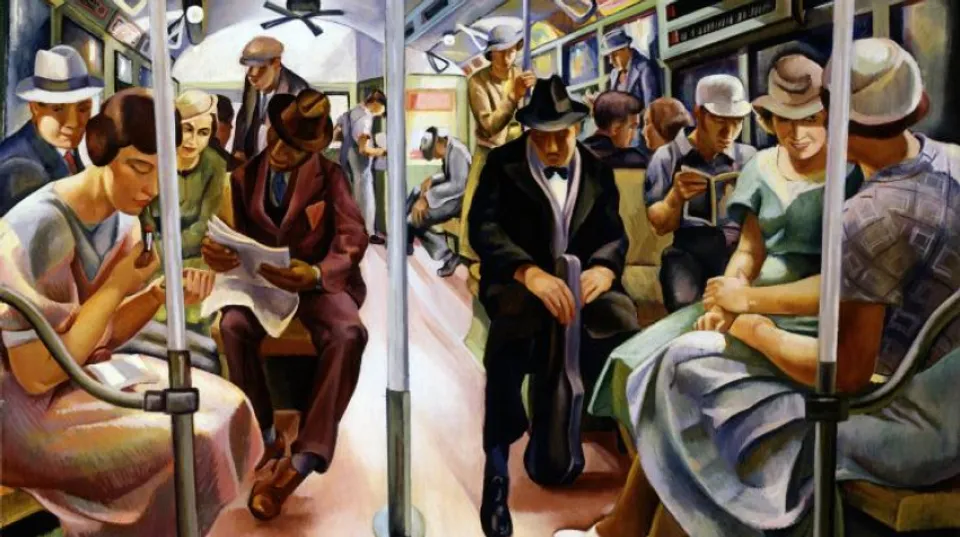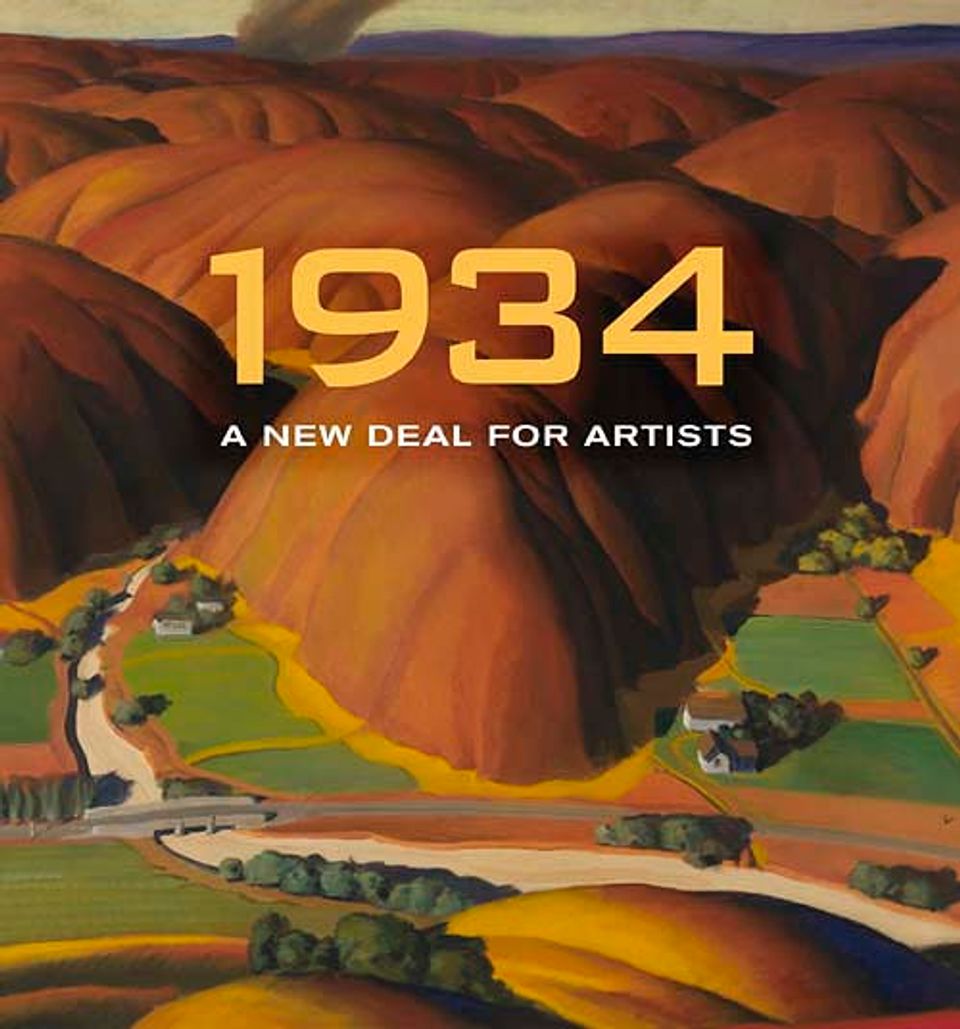Artwork Details
- Title
- Subway
- Artist
- Date
- 1934
- Location
- Dimensions
- 39 x 48 1⁄4 in. (99.1 x 122.6 cm.)
- Credit Line
- Transfer from the U.S. Department of the Interior, National Park Service
- Mediums
- Mediums Description
- oil on canvas
- Classifications
- Subjects
- Figure group
- Recreation — leisure — grooming
- New Deal — Public Works of Art Project — New York City
- Architecture — vehicle — subway
- Recreation — leisure — conversation
- State of being — other — sleep
- Recreation — leisure — reading
- Figure group
- Object Number
- 1965.18.43
- Research Notes
Artwork Description
Furedi takes a friendly interest in her fellow subway riders, portraying them sympathetically. She focuses particularly on a musician who has fallen asleep in his formal working clothes, holding his violin case. The artist would have identified with such a New York musician because her father, Samuel Furedi, was a professional cellist.
1934: A New Deal for Artists exhibition label
Works by this artist (22 items)
Videos
Hop aboard artist Lily Furedi’s Subway with Virginia Mecklenburg, senior curator of 20th century art at the Smithsonian American Art Museum. Look closely at the choices Furedi makes in depicting a varied group of passengers on a New York City subway car in 1934. Learn more about the connection between this painting and the Public Works of Art Project, a federal program that supported artists during the Great Depression.
This video is part of the Smithsonian American Art Museum's ongoing series American Art Moments. Join a SAAM expert and go beyond the artwork label to discover the untold stories and rich connections represented in some of the museum's most iconic artworks.
Related Books
Related Posts
















